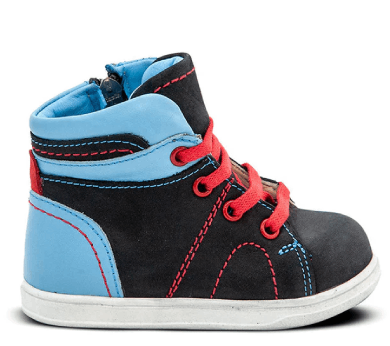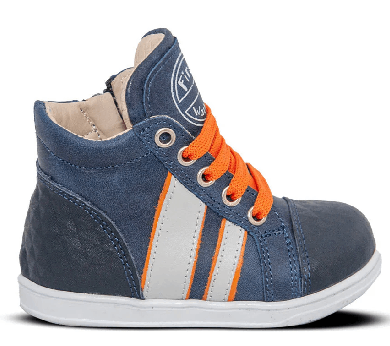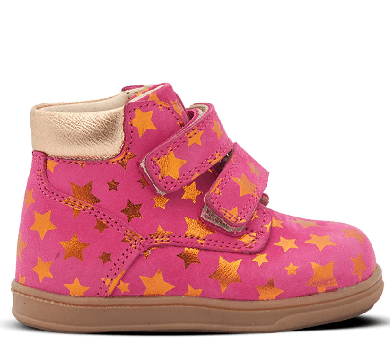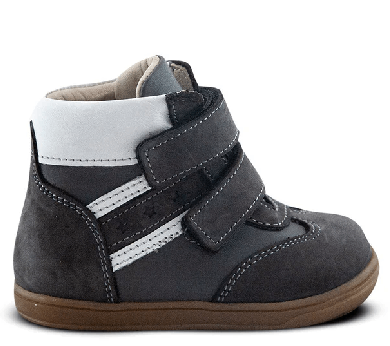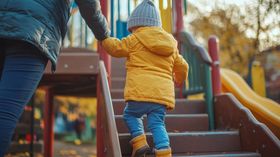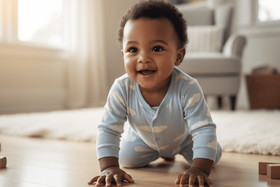When Can Babies Start Wearing Soft Bottom Shoes?
Most baby shoes are overbuilt, overpriced, and do more harm than good. If your child is learning to walk, the last thing they need is a stiff sole getting in the way.
Updated July 21, 2025
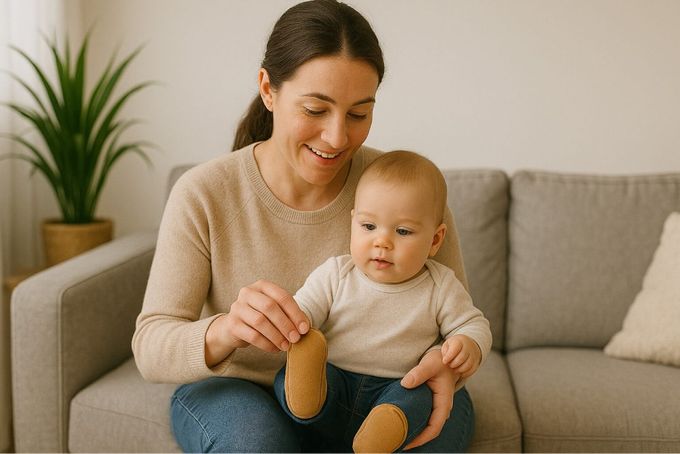
Your baby’s first steps aren’t just cute. They’re important. And what’s on their feet—if anything—can help or hinder how they learn to move.
Most parents think they need to buy sturdy, supportive shoes the moment their baby starts toddling. That’s not just unnecessary—it’s often the wrong move. Soft-soled shoes mimic being barefoot. And barefoot is best when those first steps begin.
» Browse a collection of soft-soled, orthopedic shoes for kids
When Can Babies Start Using Soft-Soled Shoes?
Once your baby starts walking independently—usually around 12 months—they’re ready for soft-soled shoes. Not before.
A 2021 study in PLOS ONE used motion capture to compare barefoot walking and soft-sole walking in toddlers aged 12 to 15 months [1]. Result? Nearly identical movement patterns. That’s what you want.
So, wait for independent steps. Then choose walking shoes that protect the feet but don’t interfere with them.
Soft soles help with:
- Balance
- Sensory feedback
- Heel-to-toe walking
- Foot muscle development
Hard soles do none of that. If anything, they slow it down.
» Find out when your baby should start wearing hard-soled shoes
What Makes Soft-Soled Shoes Different?
Here’s what matters:
Materials
Soft-soled shoes use light, breathable materials like leather, cotton, neoprene, or soft synthetics. They bend and mold to the foot. Hard-soled shoes use rubber or plastic, which adds bulk and restricts movement.
» Find out why your baby's feet might be stinky and learn to fix it
Flexibility
Soft soles flex in every direction. That lets babies grip the ground with their toes and build balance and body awareness. Hard soles restrict this motion. Babies in soft shoes handle uneven ground better. They trust their feet, and you'll be able to see it.
Foot Development
Soft-soled shoes let the foot work naturally. This helps arches form and muscles grow. Hard soles may weaken those muscles by doing the work for them. Clinically, this is the most common myth I correct: Supportive doesn’t mean helpful, not for healthy, developing feet.
» Check out the best shoes for babies learning to walk
Gait and Balance
Soft shoes help babies walk heel to toe. Hard shoes often lead to a stomping, flat-footed walk as kids try to feel the floor through a thick sole. One study found that babies in hard shoes spend more time in contact with the ground per step [2]. That’s not a good thing—it signals an unnatural gait.
» Discover the meaning of wide stance walking in toddlers
When Soft-Soled Shoes Aren’t Enough
Soft soles aren’t right for every situation. Outdoors on sharp or hot surfaces, a flexible shoe with a tougher rubber sole is safer. Cold or wet? Choose insulated, waterproof options that still allow movement.
And if your child has specific medical needs, talk to a pediatric specialist—some conditions require more structure, but it’s important not to overcorrect too early.
» Check out the developmental milestones your kid will go through
Let the Foot Do the Work
The best first shoes do less, not more. If your baby is just learning to walk, soft soles give them what they need—freedom to move, feel, and grow strong on their own. Wait to add structure until the ground gets rough or the weather turns cold. Feet know what to do. The right shoes just stay out of the way.
If you’re looking for a good place to start, First Walkers makes orthopedic shoes that check all the right boxes—flexible, lightweight, and built to support healthy movement from day one.
References:
- C. Williams, J. Kolic, W. Wu, and K. Paterson, “Soft soled footwear has limited impact on toddler gait,” PLoS ONE, vol. 16, no. 5, p. e0251175, May 2021, doi: 10.1371/journal.pone.0251175. Available: https://doi.org/10.1371/journal.pone.0251175
- C. Wegener, A. E. Hunt, B. Vanwanseele, J. Burns, and R. M. Smith, “Effect of children’s shoes on gait: a systematic review and meta‐analysis,” Journal of Foot and Ankle Research, vol. 4, no. 1, Jan. 2011, doi: 10.1186/1757-1146-4-3. Available: https://pmc.ncbi.nlm.nih.gov/articles/PMC3031211/?utm_source
Disclaimer: First Walkers' information is intended for educational and informational purposes related to toddler footwear and feet. We encourage you to consider individual circumstances and consult qualified orthopedists about specific conditions.

